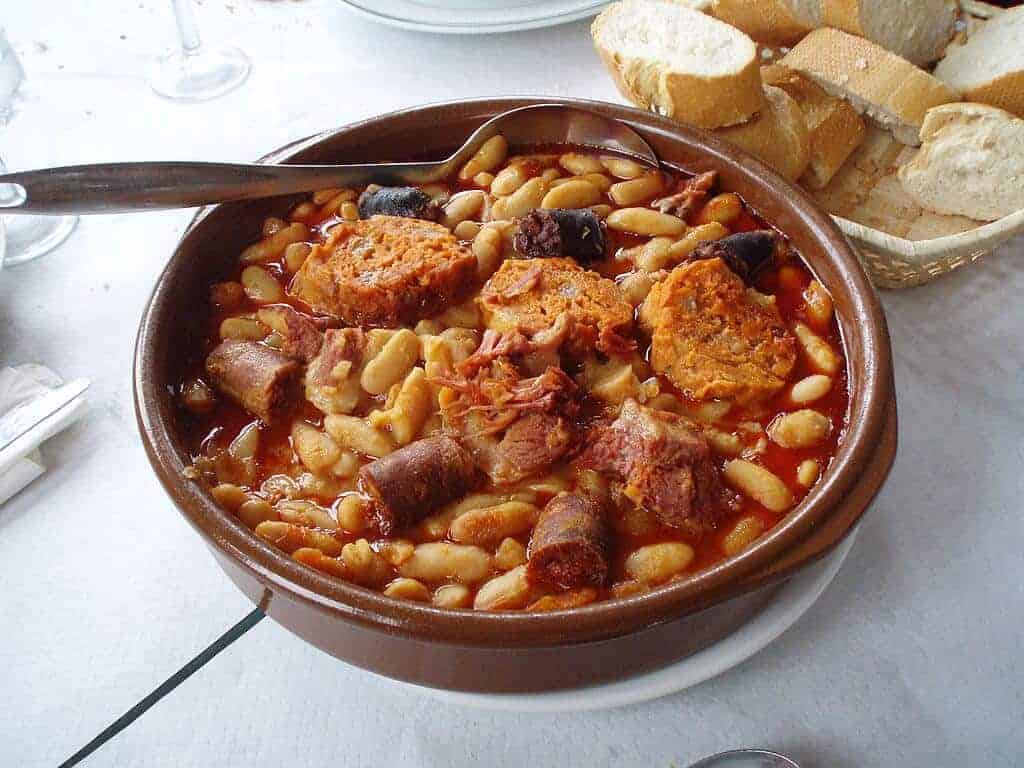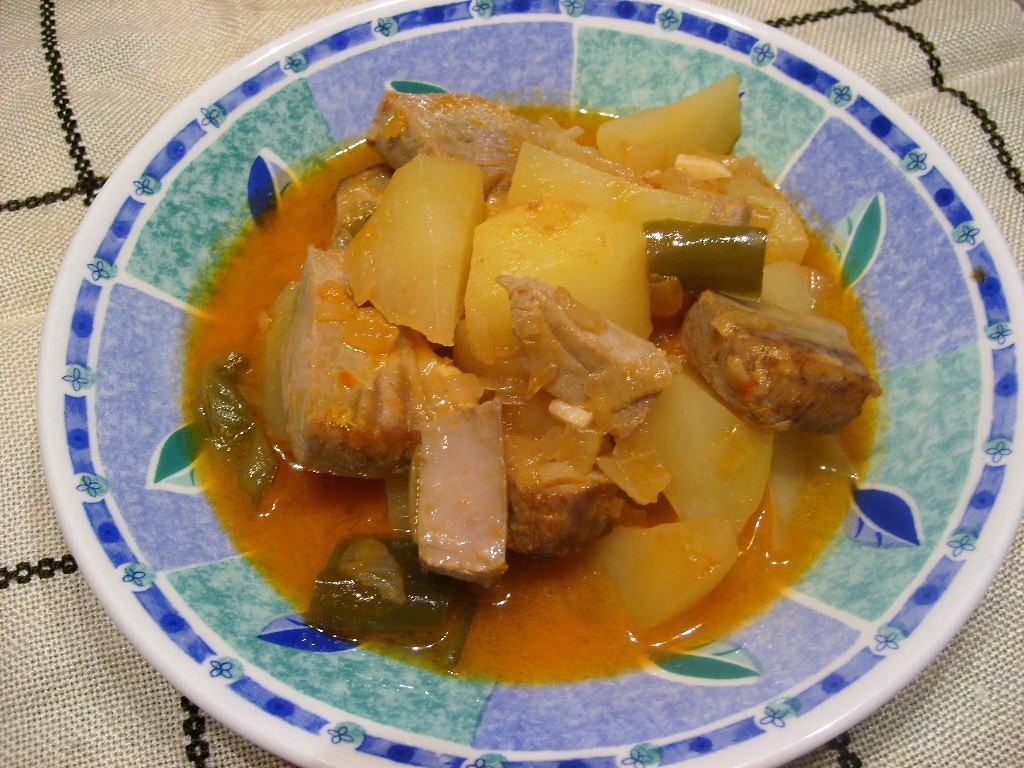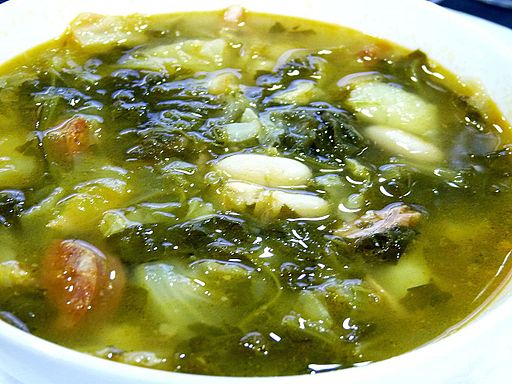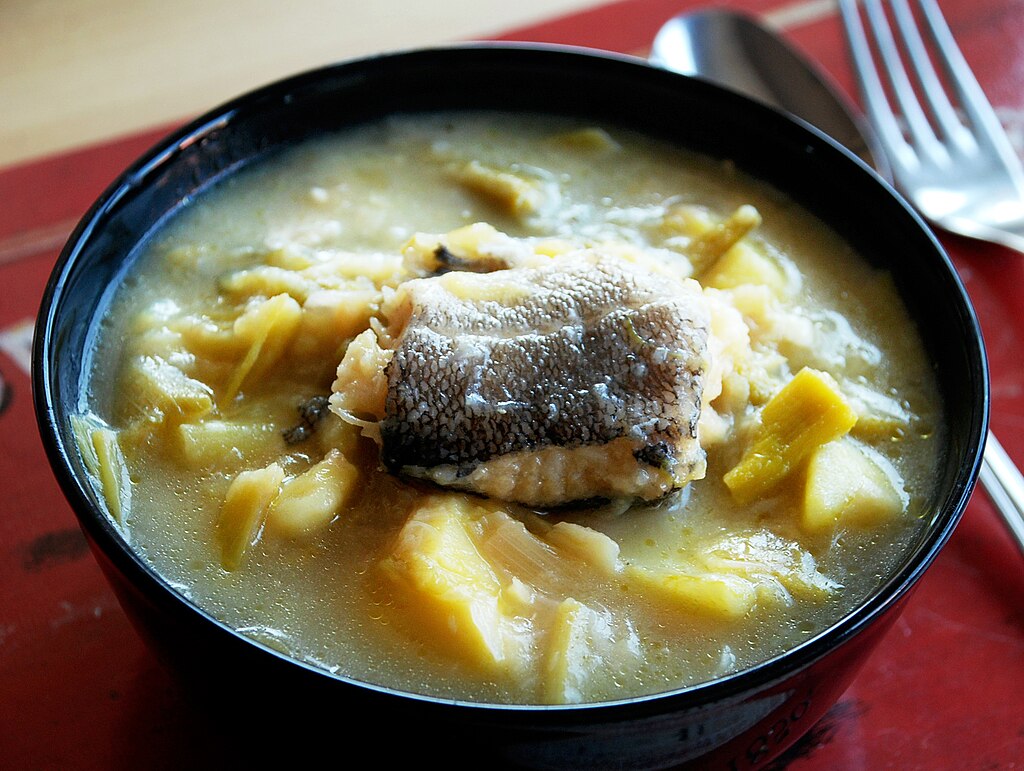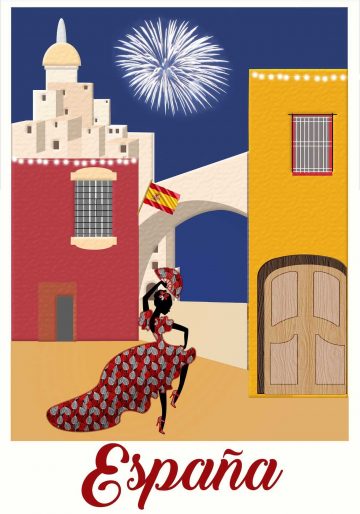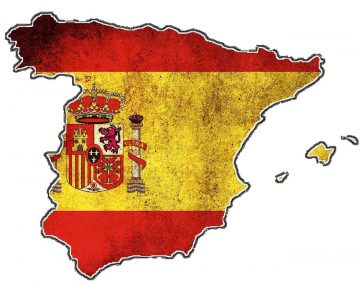For the third and final part of this Spanish gastronomy guide, we’re covering these regions: Asturias, Canary Islands, Cantabria, Galicia, and Navarra. Remember to check the first part of our Spanish gastronomy guides here and the second part here.
For more food and restaurant-related content, click here!
Asturias
What you should know
It has a Celtic origin. Since Asturias is near the sea, seafood is important in its cuisine. The cheese of this region is popular all across Spain.
Staple dish
Fabada (Asturian bean stew). It’s made with white beans, sausages like chorizo and morcilla, and pork. Probably one of the best-known dishes in Spanish gastronomy.
Other dishes you should try
- Fish dishes: beans with clams, prawn fabada, octopus fabada, potaje de vigilia (usually served during Good Friday with cod)
- Meat dishes: hare fabada, partridge fabada, Asturian stew (with white beans, potatoes, cabbage, sausages, and bacon), carne gobernada (roasted veal meat), cachopo (veal steak with ham and cheese).
- Pork dishes: chosco (Asturian-style tripe), and bollos preñaos (bread bums stuffed with chorizo)
- Drinks: local cider made of Asturian apples
- Cheese: Cabrales cheese, Gamonéu, Afuega’l pitu, and ahumado de Pría.
- Desserts: frisuelos (similar to crêpes), rice pudding (with milk, lemon zest, and sugar), and carbayones (similar to eclairs but filled with almond mash, covered with sugar glaze).
Basque country
What you should know
Basque cuisine is one of the reasons people visit the Basque country (besides having also some of the most interesting museums). This cuisine has a wide range of ingredients and preparations but you have to try seafood. Basque country is home of the famous chef Juan Mari Arzak, creator of the New Basque Cuisine and owner of Arzak, one of the first three-star Michelin Guide restaurants in Spain. A staple in Spanish gastronomy!
Staple dish
Marmitako. It’s a tuna fish stew with potatoes, onions, peppers, and tomatoes. There are also versions of this dish with salmon instead of tuna. If you want to try the real deal, go for tuna.
Fun fact: Marmitako in Basque language means from the pot.
Other dishes you should try
- Comfort food: piperrada (prepared with onion, green peppers, tomatoes, and red Espelette pepper, may also be served with egg or meat), talo (similar to tortillas but made only of corn, water, and salt).
- Fish dishes: bacalao al pil pil (cod in a sauce made of the cod itself with oil, garlic, and chili pepper), bacalao a la Vizcaína (cod with onion, garlic, chili peppers, tomato, flour, and oil), and anchovies
- Meat dishes: beef steaks, pork loin with milk, fig leaf quail, marinated goose, chistorra, jambon de Bayonne (cured ham), and tripotx (sausage made of lamb blood from Biriatou)
- Desserts: cuajada (milk curd), etxeko biskotxa (cake of the house filled with black cherry jam or pastry cream),
- Cheeses: Idiazabal, Roncal, and Ossau-Iraty
- Drinks: Basque cider, Izarra liqueur, kalimotxo (wine with cola), and finally Txakoli wine
Canary Islands
What you should know
The Canary Islands have a unique location. Since they were part of the trading routes to America, its cuisine has many culinary traditions. Of course, fish is basic in Canarian cuisine, but also potatoes, cheese, fruits, and pork. Many dishes have a sauce called mojo that varies depending on the dish it’s served with. Gofio, flour made of sweet corn, is another ingredient that many dishes include.
Staple dish
Papas arrugadas. This dish is made of small potatoes without skin, boiled in water with salt, and served with mojo. A must if you want to try Spanish gastronomy.
Other dishes you should try
- Soups: potajes (vegetables with potatoes, there are many variations depending on the vegetables available), caldo de Pescado (fish soup), rancho canario (chickpeas, lard, noodles, potatoes, and meat).
- Fish dishes: sancocho canario (boiled fish with potatoes, gofio, mojo, and sweet potatoes), also, pescado seco (dry fish)
- Meat dishes: first of all, conejo en salmorejo (rabbit stew with coriander sauce), Carne fiesta (pork), costillas con piña (ribs with pineapple), puchero canario (chicken, beef and pork meat with potatoes, chickpeas, corn, sweet potatoes, and available vegetables), and ropa vieja (chicken and beef with potatoes and chickpeas)
Fun fact: ropa vieja is the precursor of Cuban ropa vieja
- Desserts: truchas (pastries with sweet potato or pumpkin), roasted gofio (a dough made of roasted sweetcorn with nuts and honey), and Príncipe Alberto (mousse with almonds, coffee, and chocolate)
Cantabria
What you should know
The geography of Cantabria allows its cuisine to include seafood (both from the Cantabrian Sea and the basins of the rivers); vegetables and dairy products form the valleys; and veal, deer, rabbits, hares, and boars from the mountains.
Staple dish
Cocido montañés, a stew made with pork, cabbage, and beans.
Other dishes you should try
- Fish dishes: first of all, marmita or sorropotún, maganos encebollados (squid with onions and squid ink), clam casserole
- Pastries: sobaos (cake with lemon zest), quesadas pasiegas (dense pudding with lemon zest), rice pudding, natillas (custard), and also leche frita (made with flour with milk)
- Cheeses: picón Bejes-Tresviso, quesucos de Liébana (mix of cow and sheep milk)
- Drinks: Orujo (Cantabrian pomace brandy), cider, and chacoli wine
Galicia
What you should know
Due to the fact that Galician grasses and shrubs are green all year long, they’re excellent for grazing. Meat from cows, sheep, and pigs is popular and people consume it a lot. Potatoes are the staple of this cuisine and seafood is also pretty common, making it a great example of Spanish gastronomy.
Staple dish
Caldo Galego (or caldo Gallego in Spanish) is a broth. It uses cabbage, collard greens, sweet turnip greens, potatoes, white beans, and lard for its preparation. It also contains pork, chorizo, ham, or bacon.
Other dishes you should try
- Soups: caldo de castañas (chestnut broth)
- Meat dishes: lacón con grelos (pork shoulder with chorizo and vegetables), carne ao caldeiro (veal with potatoes, bell pepper, lard, and oil), botelo or butelo (meat-stuffed pork intestine)
- Fish dishes: Galician empanada, polbo á feira (octopus)
- Cheeses: queixo de tetilla
- Sausages: androlla
- Desserts: tarta de Santiago (almond cake), filloas (pancakes)
- Drinks: ribeiro and albariño wine, orujo
Navarre
What you should know
Navarre cuisine is deeply connected to the agricultural practices in the region. This region has an amazing produce every season. The preservation of indigenous products is very important to people in Navarre, as well as the conservation of traditional methods to prepare dishes.
Staple dish
Caldereta. Prepared with lamb or rabbit, potato and vegetables. If you go to a social gathering, you may be able to eat it there.
Other dishes you should try
- Soups: porrusalda (broth with chopped leek and potato), estellesa soup (with lard, rice, and milk), ox stew, and lamb stew
- Comfort food: migas de Ujué (sheep fat, garlic, water, salt, and old bread)
- Meat dishes: roasted suckling pig, grilled steak
- Sausages: chorizo de Pamplona, txistorra (cured sausage)
- Cheeses: Roncal cheese, also, Irdiazabal cheese
- Desserts: curd with walnuts and honey, txantxigorri cakes (with pork and sugar), pies from Aoiz, chandríos (donuts), and finally leche frita (milk, flour, and sugar all fried)
- Drinks: claret, pacharán (produced by soaking sloe berries in aniseed)
Now that you know everything about Spanish gastronomy, what are you waiting to visit this amazing country?

